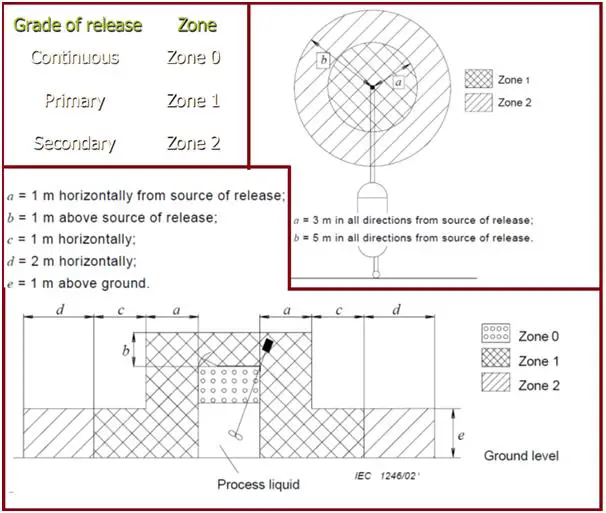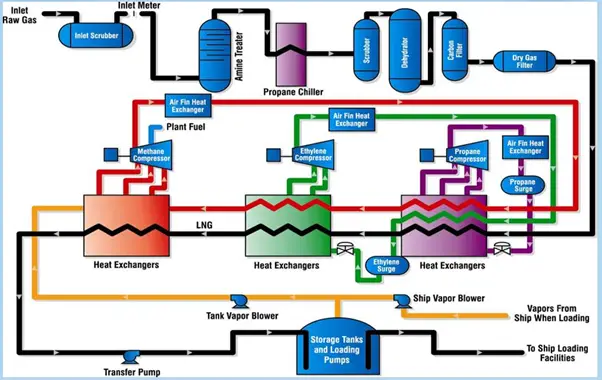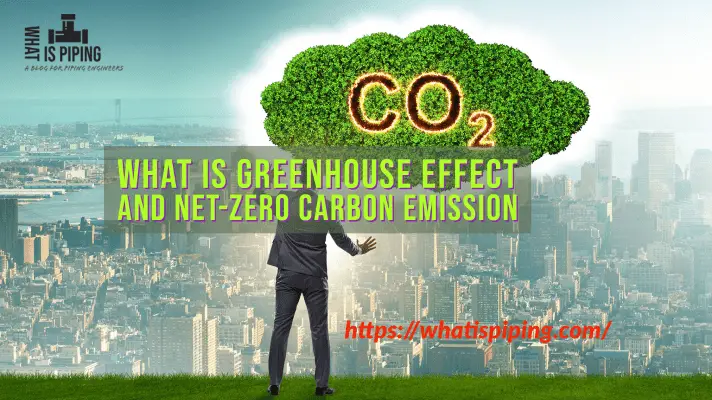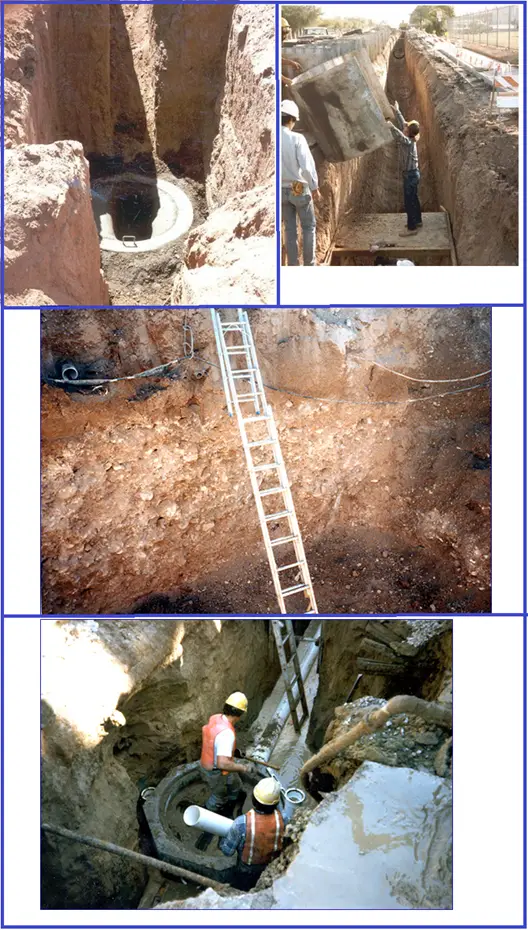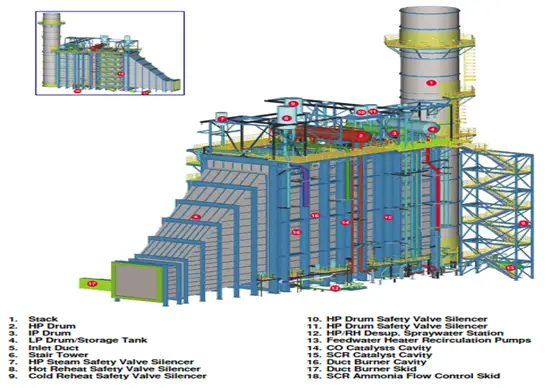In an ever-changing world, humans have made remarkable strides in conquering nature’s challenges and harnessing its resources. Yet, there are places on Earth that remain untamed, environments that hold inherent dangers for those who dare to venture into them. These hazardous environments, whether natural or human-made, serve as reminders of the power and unpredictability of the world around us. In this article, we will explore the concept of hazardous environments, their types, the risks they pose, and how we can safeguard ourselves against their potential threats.
What is a Hazardous Environment?
A hazardous environment is any area where the conditions or substances present can pose a threat to human health, safety, or the surrounding ecosystem. These environments can range from the extreme and inhospitable, such as desolate polar regions or scorching deserts, to areas contaminated by toxic chemicals, radiation, or biological agents.
The meaning of hazardous environment is any setting that contains physical, chemical, biological, or ergonomic hazards that can cause injury, illness, or even death. Such environments can be found in various sectors including industrial workplaces, laboratories, construction sites, and natural settings. The main characteristics of a hazardous environment are:
- Presence of Dangerous Substances: Environments where toxic chemicals, flammable materials, or radioactive substances are used or stored.
- Physical Dangers: Locations with extreme temperatures, high noise levels, heavy machinery, or structural hazards.
- Biological Risks: Areas with exposure to pathogens, molds, or other biological agents that can cause health issues.
- Ergonomic Challenges: Settings where poor design or layout leads to repetitive strain or musculoskeletal injuries.
Types of Hazardous Environments
Natural Hazard Zones:
- Extreme Climates: Deserts, polar regions, and high-altitude areas challenge survival due to temperature extremes and lack of resources.
- Deserts: Harsh desert conditions with extreme temperatures, limited water availability, and potential sandstorms can challenge survival.
- Polar Regions: Extremely cold temperatures, icy terrain, and isolation make polar environments hazardous for humans.
- Volcanic Zones: Proximity to active volcanoes poses risks to lava flows, ash clouds, and pyroclastic flows.
- Earthquake-Prone Regions: Fault lines and tectonic plate boundaries can lead to devastating earthquakes and tsunamis.
- Earthquake-Prone Regions: Areas near fault lines and tectonic plate boundaries can experience devastating earthquakes, tsunamis, and associated hazards like landslides.
- Tropical Rainforests: Dense vegetation, high humidity, and the presence of disease-carrying organisms make tropical rainforests hazardous for exploration.
- Deep Oceans and Abyssal Zones: Extreme pressure, darkness, and limited accessibility create hazardous conditions for deep-sea exploration.
- Desolate Islands and Remote Locations: Isolated islands or remote locations may lack essential resources and medical facilities, posing risks to travelers and inhabitants.
- Extreme Altitudes: High-altitude environments, such as mountaintops, can expose individuals to oxygen depletion, extreme cold, and altitude sickness.
- Avalanche-Prone Areas: Snow-covered mountain slopes with unstable snowpacks can lead to avalanches, posing risks to skiers, climbers, and residents.
- Coastal Areas and Storm Surge Zones: Vulnerable to hurricanes, cyclones, and storm surges, coastal areas can experience flooding, wind damage, and infrastructure destruction.
Industrial and Technological Hazard Zones:
- Nuclear Facilities: Radioactive materials at nuclear power plants or waste storage sites can lead to radiation exposure, contamination, and potential health issues.
- Chemical Plants and Hazardous Material Storage: Accidental releases of toxic chemicals can lead to immediate health hazards and long-term environmental pollution.
- Mining Sites and Abandoned Mines: Mines can contain hazardous gases, unstable structures, and toxic residue, posing risks to miners and nearby communities.
- High-Radiation Zones: Areas with elevated levels of ionizing radiation, such as near nuclear accidents or within certain industries, can lead to radiation poisoning.
- Industrial Accidents: Chemical spills, explosions, and fires in industrial areas can result in immediate dangers and long-term environmental consequences.
- Extreme Decibel Levels. Prolonged exposure to excessive noise can damage or destroy hearing capabilities, or cause even more serious problems.
Biological Hazard Zones:
- Disease Outbreak Areas: Regions with high rates of contagious diseases can endanger both local populations and travelers.
- Bioterrorism Threats: Deliberate release of harmful pathogens could lead to widespread illness and panic.
- Biologically Contaminated Zones: Areas contaminated by biological agents, such as pathogens or toxins, can lead to infections or poisoning.
- War Zones and Conflict Areas: Ongoing conflicts can result in hazardous conditions due to violence, unexploded ordnance, and damaged infrastructure.
- Poor Air Quality. Air does not necessarily have to be contaminated to be dangerous. Low oxygen or high dust levels can be fatal.
Psychological Hazards:
Psychological risks encompass elements within work settings that have the potential to induce psychological distress or contribute to mental health challenges. These encompass variables like stress, workplace harassment, exhaustion, burnout, and instances of aggression, among various others. Such factors can precipitate psychological conditions such as anxiety, depression, and post-traumatic stress disorder (PTSD). It’s worth noting that these psychological risks can manifest across a diverse array of work environments, emphasizing the pivotal role of their effective management within the realm of occupational health and safety.

Environmental Hazards with respect to Chemical Industries
With respect to a chemical plant or oil and gas facilities, a hazardous environment can be defined as any workplace that involves any of the following:
- Combustible Substances: Industries like oil and gas extraction operate within highly sensitive locations, where a single miscalculation regarding atmospheric conditions could result in a catastrophic disaster. Consequently, meticulous monitoring of air-borne chemicals is imperative. The article “Innovative Flame Detector Provides Enhanced Safety in High-Risk Environments” delves into the urgent necessity for monitoring these chemicals and the emerging technologies striving to address this need.
- Airborne Pollutants: Air pollution frequently pervades the surroundings of chemical facilities and other workplaces where pollutants are not confined. This may lead to respiratory complications, visual impairment, or even more severe and dire consequences.
- Inadequate Air Quality: Air quality need not necessarily be tainted to pose a peril. Low oxygen levels or elevated dust concentrations can prove lethal.
- Dropped Objects: Construction sites often feature elevated scaffolding, making falling objects an inherent hazard. Absent proper safety precautions such as waste disposal chutes, safety nets, or barriers, these objects can result in harm or fatality.
- Severe Temperature Extremes: Excessive heat (found in deserts, industrial furnaces, and confined airless spaces) or intense cold (in frigid storage units or inhospitable outdoor conditions) can lead to heat-related strain or hypothermia, respectively. Either condition has the potential to be fatal.
- Intense Noise Levels: Prolonged exposure to extreme noise levels can cause irreversible hearing impairment or even more severe health issues.
Identifying a Hazardous Environment
Identifying a hazardous environment involves a comprehensive assessment to recognize and evaluate potential dangers that could harm health and safety. Start by understanding the types of hazards present, including chemical, physical, biological, and ergonomic risks. Conduct a detailed risk assessment through walk-through surveys and consultations with employees, using checklists and monitoring tools like gas detectors and noise meters to measure hazards accurately. Review relevant regulatory standards and Safety Data Sheets to ensure compliance with safety regulations. Implement safety programs, including regular training and safety audits, and maintain thorough documentation of identified hazards and safety measures. Effective communication of hazards and safety procedures is essential to ensure that all individuals are aware of and can manage potential risks.
Risks and Challenges
The risks associated with hazardous environments can range from acute dangers, such as immediate physical harm or exposure to harmful substances, to long-term health effects and environmental degradation. These risks are compounded by factors like limited access to medical care, communication difficulties, and the potential for isolation.
Examples of Environmental Hazards
Environmental hazards are conditions or factors in the environment that have the potential to cause harm to living organisms, including humans. These hazards can arise from natural processes, human activities, or a combination of both. Here are some examples of environmental hazards:
- Air Pollution: Emissions from vehicles, industrial processes, and the burning of fossil fuels can release pollutants into the air, leading to respiratory problems and other health issues.
- Water Contamination: Polluted water sources, contaminated with chemicals, heavy metals, or pathogens, can pose serious health risks if consumed or used for daily activities.
- Soil Contamination: Improper waste disposal, agricultural chemicals, and industrial pollutants can contaminate soil, potentially affecting crops and groundwater.
- Hazardous Waste: Improper handling and disposal of hazardous waste materials can lead to environmental pollution and health risks for both humans and wildlife.
- Toxic Chemical Exposure: Exposure to toxic substances such as lead, asbestos, and pesticides can result in various health problems, including neurological damage and cancer.
- Natural Disasters: Events like earthquakes, hurricanes, floods, and wildfires can cause widespread destruction, displacing populations and leading to injuries or fatalities.
- Radon Gas: This naturally occurring radioactive gas can seep into homes and buildings, potentially causing lung cancer over prolonged exposure.
- Noise Pollution: Excessive noise levels from sources like construction sites, industries, and traffic can lead to hearing loss, stress, and other health issues.
- Electromagnetic Fields: Prolonged exposure to electromagnetic radiation from sources like power lines and electronic devices has raised concerns about potential health effects.
- Climate Change: Rising global temperatures, sea-level rise, and extreme weather events associated with climate change can disrupt ecosystems, impact agriculture, and threaten human livelihoods.
- Nuclear Accidents: Accidents at nuclear power plants can release radioactive materials into the environment, posing health risks for nearby populations.
- Biological Hazards: Exposure to disease-causing organisms, allergens, and toxins from mold or bacteria can lead to health problems.
- Landslides and Erosion: Slope instability and erosion can result in property damage, loss of life, and disruption of infrastructure.
- Wildlife and Plant Extinction: Human activities, habitat destruction, and pollution contribute to the decline and extinction of various species, disrupting ecosystems.
- UV Radiation: Excessive exposure to ultraviolet (UV) radiation from the sun can cause skin cancer and other health issues.
- Food Contamination: Contaminated food due to improper handling, processing, or storage can lead to foodborne illnesses.
- Pesticide and Chemical Residues: Residues from pesticides and chemicals used in agriculture can enter the food chain, affecting human and animal health.
Safeguarding Against Hazardous Environments
Education and Training:
Knowledge is the first line of defense. Individuals who may need to enter hazardous environments should undergo thorough training on safety protocols, equipment usage, and emergency procedures.
Protective Gear and Equipment:
Proper clothing, respiratory protection, and specialized equipment can minimize exposure to hazardous substances and conditions.
Risk Assessment and Planning:
Thorough risk assessments should precede any entry into hazardous areas. Plans should be in place for emergencies, including communication and evacuation procedures.
Technology and Innovation:
Remote sensing devices, drones, and robotic systems can aid in exploring and monitoring hazardous environments without direct human exposure.
Collaboration and Research:
Scientists, engineers, and researchers can work together to develop innovative solutions and mitigation strategies for hazardous environments.
Conclusion
Hazardous environments are a reminder of the challenges that nature presents and the need for humans to exercise caution and respect for the world around us. By understanding the types of hazardous environments, assessing risks, and employing appropriate safeguards, we can navigate these challenging landscapes while minimizing harm to ourselves and the environment. As technology and knowledge continue to advance, we can hope to further our ability to explore, study, and coexist with hazardous environments in a responsible and sustainable manner.

